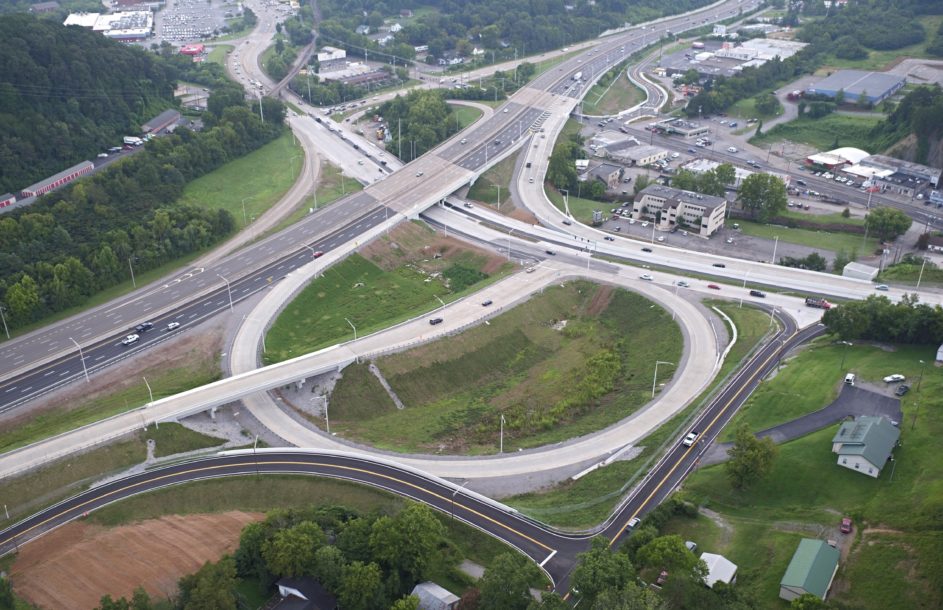Broadway carries nearly 49,000 cars a day in the Fountain City area. Its intersection with I-640 and nearby Tazewell Pike has been a challenge for years.
The interchange originally featured a cloverleaf type design, but over time there has been too much competing traffic to keep things safe. Both feeder roads interfacing with Broadway are heavily traveled. At present, I-640 west carries 80,000 cars per day (average daily traffic) and Tazewell Pike some 17,000. Broadway traffic is projected to grow to 58,000 vehicles by 2035. Better traffic handling capacity was clearly needed.
Already, too many cars turning in front of other cars or making hasty lane changes or merges multiplied the chances for unhappy run-ins. The accident rate kept increasing.
Efforts to fix the dangerous crisscrossing of cars to enter and exit the interstate and risky left-hand turns began in the late ‘90s. TDOT’s Phase I efforts focused on handling eastbound cars exiting I-640, providing ample queue-up room with four lanes leading up to the traffic lights on Old Broadway and Broadway. It was completed in 2003 at a cost of $28.8 million.
Plans to safely handle the remaining I-640 and Tazewell Pike traffic patterns were more complex and began being publicly aired in a series of TDOT meetings beginning in 2012. Citizens raised issues about affected businesses and the inability to make a left turn from Greenway onto Broadway heading south. The final design could not accommodate that risky left turn from Greenway (it merges north only) but found ways to better manage Broadway and Tazewell Pike traffic.
There were many more public meetings before a $23 million contract was awarded to Blalock Construction in April 2016. Phase II construction began once land surveying and acquisition of some 56 acres was complete. The heavy construction was basically completed this July, allowing traffic-handling features to open, with punch list and supporting work to be completed this fall.
Now there are separate ramps for every directional choice when driving to and through the Broadway interchange. Phase II has taken some eight years and over $28 million to complete, but the dangerous crisscross traffic patterns have been greatly eased or completely avoided. Longer exit ramps protect cars waiting at traffic lights and keep queues from becoming dangerously long during rush hours.
Previous partial solutions, like the city’s red light cameras, did little to change people’s driving habits or curtail rear-end collisions, although the fines levied did help the city’s coffers.
As noted, only punch list items remain today. TDOT plans to photograph the entire worksite by drone in the near future to assist in computing final material quantities billable under the contract. Gone are the days when land surveyors lugged heavy transits around the site to gather grist for those quantitative calculations. (Job seekers take note: Computer technology is expanding into many fields. Job training needs to evolve to incorporate these tools, but that’s a story for another day.)
TDOT deserves a lot of credit. This “Miracle on Broadway” has made travel on these busy roads safer. Not everyone thinks it’s perfect, but it’s dang near so. Of course, busy Broadway still hosts some hairy left turns into shopping centers, and those heading south from Greenway still face challenges – going north first before turning to the south, or picking an alternate route. The state left the city to resolve bike trail connections along old Broadway past Louis’ restaurant. That remains a local issue.
The overall traffic flow has been improved and the pucker factor is gone. Safety is job one in the state road-building/upgrade business. TDOT’s new Broadway interchange system clearly evidences that priority.
Nick Della Volpe is a lawyer and a former City Council member.

